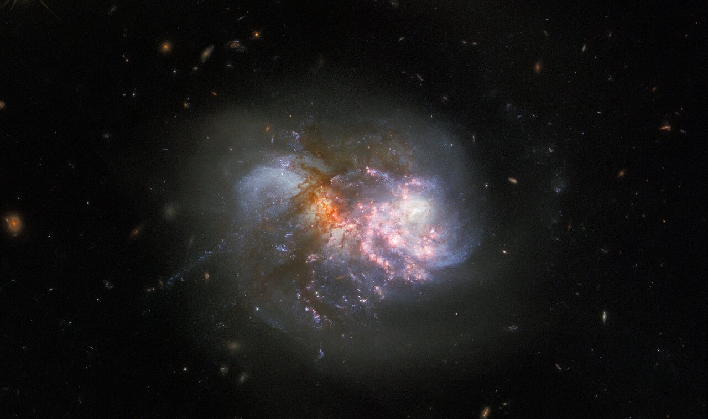NASA's Space Telescope Captures Galaxies Colliding In A Dramatic Cosmic Merger
The two galaxies, referred to as IC 1623, are very bright, making them a perfect candidate for Webb to shine. A team of astronomers were able to capture the two merging galaxies using three of Webb's instruments: MIRI, NIRSpec, and NIRCam. By using Webb to capture the conjoined galaxies across the infrared portions of the electromagnetic spectrum, researchers will have an abundance of never before seen data to try and unveil the complex interactions in galactic ecosystems, along with previous observations made by other observatories.
This is not the first time an incredible image of the two galaxies has been captured. Hubble captured the pair in 2008, using two filters at optical and infrared wavelengths using the Advanced Camera for Surveys. That image was incorporated with new data from its Wide Field Camera 3, and combined with observations taken in eight filters covering infrared to ultraviolet wavelengths in order to present the finer details of IC 1623 at that time.
Astronomers who have been studying IC 1623, believe the ongoing and extreme starburst which causes excessive infrared emission and the merging galaxies may very well "be in the process of forming a supermassive black hole." While an important view has been blocked by a thick band of dust to other observatories, such as Hubble, Webb's infrared sensitivity and its incredible resolution at those wavelengths allow onlookers to see past the dust, and has given astronomers the new sensational image.
The European Space Agency says that the luminous core of the two galaxies merging are both very bright and highly compact. This causes diffraction spikes to appear at the top of the galaxy in the shown image. Other diffraction spikes have been seen in Webb's images, such as the first deep field image captured by the space telescope. These are caused by the interaction of starlight with the physical structure of the telescope.



